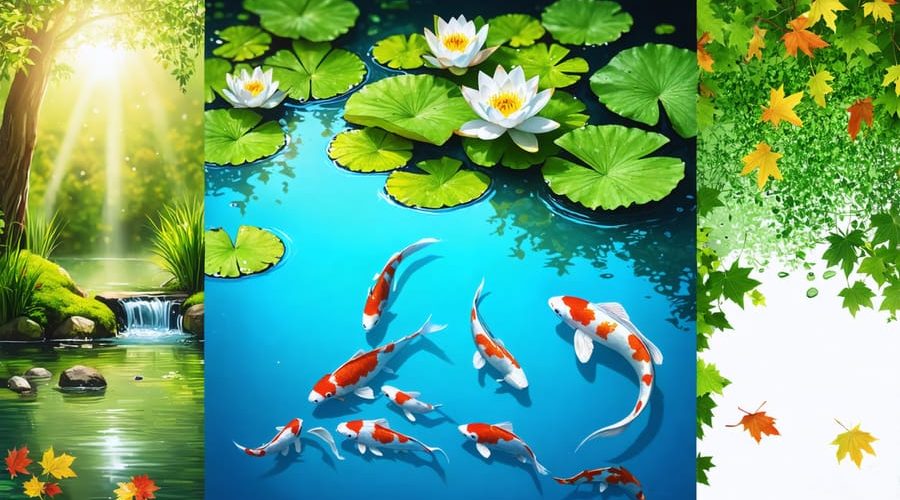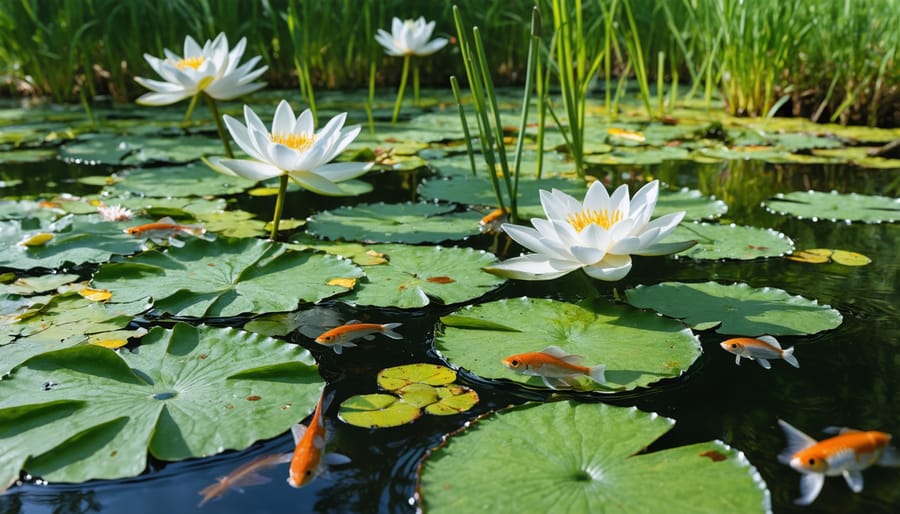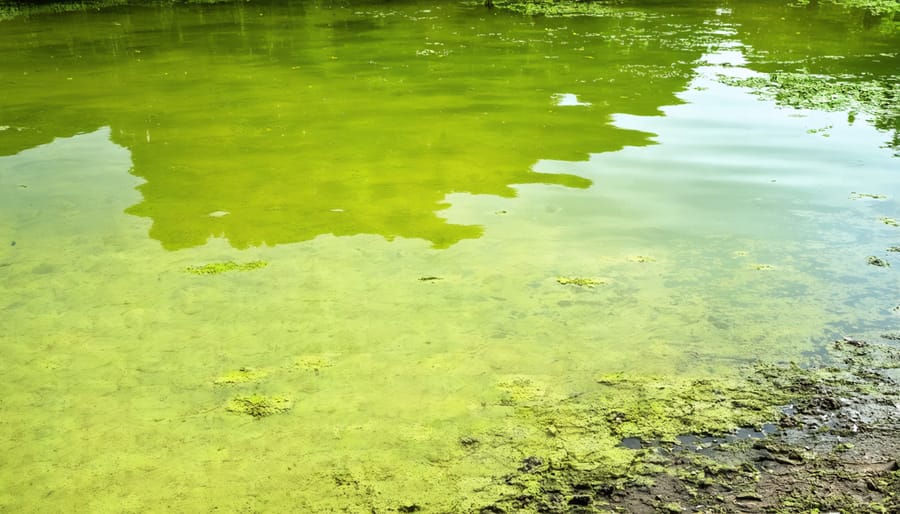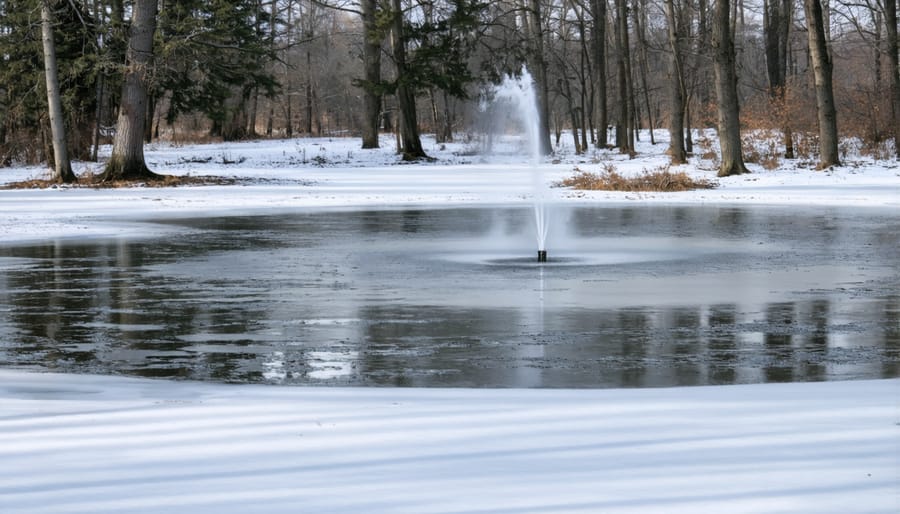
Keep Your Seasonal Pond Thriving Through Every Change
A seasonal pond transforms your backyard into a dynamic ecosystem that changes dramatically with each passing season. Like nature’s own theatrical performance, these water features burst with life during spring rains, teem with diverse wildlife through summer, reflect autumn’s golden hues, and often retreat beneath winter’s quiet surface. More than just decorative elements, seasonal ponds play a crucial role in supporting local biodiversity, providing essential habitat for amphibians, insects, and migratory birds while creating a constantly evolving focal point in your landscape.
Whether you’re a seasoned pond enthusiast or considering adding one to your property, understanding the rhythmic cycles of a seasonal pond helps you work in harmony with nature’s schedule. From the first spring thaw that awakens dormant life to the late autumn preparations for winter dormancy, each season brings its own maintenance requirements and rewards. This natural ebb and flow not only creates a sustainable environment for wildlife but also offers pond owners the unique pleasure of witnessing and participating in nature’s annual cycle right in their own backyard.
Spring: Awakening Your Pond
Spring Cleaning Essentials
As winter fades away, it’s time to roll up your sleeves and give your pond the attention it needs. Start by removing fallen leaves, twigs, and other debris that accumulated over the winter months. Use a pond net or skimmer to carefully scoop out floating debris, being mindful not to disturb any hibernating wildlife that might still be present.
Next, inspect your pond equipment thoroughly. Check your pump for any damage or wear and clean it thoroughly before reinstalling. The filter media should be cleaned or replaced as needed, ensuring proper water flow for the active season ahead. Don’t forget to examine all plumbing connections for potential leaks or loose fittings.
Test your water quality parameters, including pH, ammonia, and nitrate levels. Spring is the perfect time to perform a partial water change if needed, typically about 15-20% of the total volume. As temperatures rise, beneficial bacteria populations will need to be replenished – consider adding a quality bacterial supplement to jumpstart the biological filtration process.
Pay special attention to your pond plants. Trim away any dead or yellowing foliage from marginal plants and divide overcrowded specimens if necessary. This is also an excellent time to clean the bottom of your pond using a pond vacuum, being careful not to remove too much beneficial sediment.
Remember to clean and inspect any UV clarifiers or lighting systems you may have installed, ensuring they’re ready for the busy season ahead.
Plant and Fish Preparation
As spring approaches, it’s time to breathe new life into your seasonal pond by carefully introducing plants and fish. Start by checking the water temperature consistently – when it maintains 50°F (10°C) for at least a week, you can begin adding hardy water plants like water lilies and rushes. These plants should be gradually introduced over several weeks to prevent shock and ensure proper establishment.
For fish introduction, patience is key. Wait until water temperatures stabilize around 60°F (15°C) before reintroducing your finned friends. If you’re adding new fish, quarantine them for two weeks in a separate container to prevent potential diseases from spreading to your existing population. Start feeding your fish with easily digestible foods, but keep portions small until they become more active.
Remember to trim any dead foliage from overwintered plants and divide overcrowded specimens before replanting. Position oxygenating plants near the bottom of your pond and floating plants to cover about 60% of the water surface. This balance helps maintain water quality and provides shelter for fish.
When introducing new plants or fish, always float sealed bags in the pond for 20-30 minutes to equalize temperatures. This simple step prevents temperature shock and increases survival rates significantly.

Summer: Peak Season Management

Temperature and Algae Control
During the warmer months, maintaining proper water conditions in your seasonal pond becomes crucial for the health of your aquatic ecosystem. To optimal water temperature for fish, consider installing a pond aerator or fountain. These not only add beautiful movement to your pond but also help circulate the water and increase oxygen levels.
Shade plays a vital role in temperature regulation. Strategic placement of floating plants like water lilies can provide natural coverage, blocking direct sunlight and helping to control algae growth naturally. For additional shade, consider installing a shade sail or strategically planting tall marginal plants around your pond’s edges.
Monitor your pond’s temperature regularly using a reliable thermometer. If you notice the water getting too warm, you can add cool water gradually or increase aeration. Remember that sudden temperature changes can stress your fish, so make adjustments slowly.
To prevent algae blooms during hot weather, maintain a healthy balance of plants and consider adding beneficial bacteria treatments. These helpful microorganisms compete with algae for nutrients, naturally keeping green water at bay. Regular removal of debris and fallen leaves also helps prevent excess nutrient buildup that can fuel algae growth.
If you’re starting a new pond, aim for a depth of at least 2 feet in some areas. Deeper water stays cooler and provides fish with a refuge during hot spells. For existing ponds, creating zones of varying depths can help maintain more stable temperatures throughout the season.
Feeding and Plant Care
Maintaining proper nutrition for your pond’s ecosystem is crucial for its health throughout the seasons. For fish, provide a high-quality fish food appropriate for your species, adjusting portions based on water temperature and activity levels. During warmer months, feed them 2-3 times daily, reducing to once daily in cooler temperatures. When water temperatures drop below 50°F (10°C), cease feeding as fish enter a period of dormancy.
Aquatic plants require different care depending on their type. Floating plants like water lilies need monthly fertilizer tablets pushed into their soil during the growing season. Marginal plants benefit from slow-release aquatic fertilizer tablets every 4-6 weeks. Watch for yellowing leaves, which often indicate nutrient deficiency.
Maintain plant health by regularly removing dead or dying foliage to prevent excess organic matter from decomposing in the water. Trim back overgrown plants to maintain proper water flow and prevent overcrowding. During spring, divide and repot rapidly growing species to maintain their vigor and prevent them from taking over the pond.
For optimal plant growth, ensure proper depth placement – deep-water plants need 2-3 feet of water above their crown, while marginal plants thrive in shallow areas. Consider using plant baskets with aquatic soil mix rather than regular garden soil, which can cloud the water and affect water quality.
Remember to balance feeding and fertilizing with your pond’s size and fish population. Overfeeding or over-fertilizing can lead to algae blooms and poor water quality. Monitor water conditions regularly and adjust your feeding and maintenance routine accordingly.
Fall: Preparing for Dormancy
Leaf Management
Falling leaves are one of the biggest challenges for seasonal pond owners, but with the right management strategy, you can keep your pond healthy and clear. The key is to be proactive rather than reactive when it comes to leaf control.
Installing a pond net during autumn is your first line of defense. Position it slightly above the water surface, creating a gentle dome that allows leaves to slide off easily. Secure the edges firmly with stakes or rocks to prevent gaps where leaves might slip through.
Regular skimming with a pond net, even when you have protective covering, helps catch any debris that makes it into the water. Aim to remove floating leaves at least twice a week during heavy leaf fall. Don’t wait until leaves sink – they’re much harder to remove from the bottom and can affect water quality as they decompose.
Consider creating a “leaf zone” – an area near your pond where you can temporarily pile collected leaves. This makes cleanup more efficient and provides a natural habitat for beneficial insects. You can later add these leaves to your compost pile.
For those tough-to-reach leaves, a pond vacuum can be invaluable. Use it monthly during fall to prevent debris buildup. Remember to trim back any overhanging branches before leaf fall begins, which significantly reduces the amount of debris entering your pond in the first place.
Winterization Steps
As temperatures drop, preparing your pond for winter is crucial for the health of your aquatic ecosystem. Start by removing fallen leaves and debris with a net before they sink and decompose. Trim back your aquatic plants, cutting dead foliage just above the water line. Hardy water lilies can remain in deep water, but tropical varieties should be brought indoors.
For your fish friends, gradually reduce feeding as water temperatures fall below 50°F (10°C). When temperatures drop further, stop feeding completely as fish enter a natural state of dormancy. If your pond is shallow (less than 2 feet deep), consider relocating fish to indoor tanks for winter.
Your pond equipment needs attention too. Remove, clean, and store UV clarifiers and pumps that aren’t needed for winter. If you’re keeping a pump running to maintain a small hole in the ice for gas exchange, position it about 12 inches below the surface – not at the bottom where warmer water collects.
Install a pond net to catch falling leaves and prevent ice from completely sealing the surface. Consider adding a pond heater or aerator to maintain a small opening in the ice, ensuring proper gas exchange throughout winter. Finally, disconnect and drain any external plumbing to prevent freeze damage, and store water features like fountains indoors until spring returns.
Winter: Protection and Maintenance
Ice Management
Winter ice management is crucial for maintaining a healthy seasonal pond and protecting your aquatic inhabitants. When ice forms across your pond’s surface, it can trap harmful gases underneath and prevent vital oxygen exchange, potentially harming fish and other pond life.
To manage ice effectively, never break the ice by hitting it directly, as this can create shock waves that stress or harm fish. Instead, use a floating de-icer or pond heater to maintain a small opening in the ice. This opening allows toxic gases to escape while enabling oxygen to enter the water.
Another helpful method is placing a lightweight ball or piece of floating wood on the water’s surface before it freezes. As ice forms, remove and replace the object daily to maintain an opening. For smaller ponds, you can also use a pond net stretched across the surface to prevent complete ice coverage.
If you’re using a waterfall or fountain during winter, keep it running to maintain water movement and prevent complete freezing. However, be mindful of ice buildup on surrounding rocks or decorative features, as this can cause damage or redirect water flow outside your pond.
Remember to remove fallen leaves and debris before ice forms, as decomposing matter under ice can create harmful gases. A well-maintained pond during winter ensures a healthier environment when spring arrives.

Winter Equipment Care
Winter may be quiet above the pond, but your equipment still needs attention to ensure everything runs smoothly when spring arrives. Start by thoroughly cleaning all pumps, filters, and UV clarifiers that you’ve removed for the season. After cleaning, store these items in a dry, frost-free location to prevent damage from freezing temperatures.
If you’re keeping your pump running through winter, check it regularly to ensure it hasn’t frozen or become blocked with debris. Consider using a floating de-icer to maintain a small opening in the ice, which allows for proper gas exchange and protects your equipment from ice damage.
Test your water quality monthly, even during winter. While biological activity slows down, monitoring pH, ammonia, and oxygen levels helps you catch potential problems early. Keep your test kits in a temperature-controlled environment, as extreme cold can affect their accuracy.
Inspect your pond netting or covers weekly to remove accumulated snow, which can cause collapse. If using a pond heater, check its functionality regularly and ensure the power cord isn’t damaged by ice or wildlife.
Remember to maintain your backup equipment too. Clean and test your spare pump, if you have one, and keep essential replacement parts accessible. This preparation ensures you can quickly address any equipment failures during the cold months when quick action might be necessary to protect your pond life.
Maintaining a seasonal pond is a year-round commitment that rewards you with a thriving aquatic ecosystem. Remember to adjust your care routine as seasons change, paying special attention to water quality, plant health, and fish welfare. Regular monitoring of temperature, debris removal, and equipment maintenance will help prevent common issues before they arise. Don’t forget to prepare ahead for each season, stocking up on necessary supplies and planning maintenance tasks in advance. While each season brings its unique challenges, staying proactive and consistent with your pond care will ensure your water garden remains a beautiful and vibrant feature of your landscape throughout the year. With proper attention and care, your seasonal pond will continue to bring joy and tranquility to your outdoor space for years to come.
